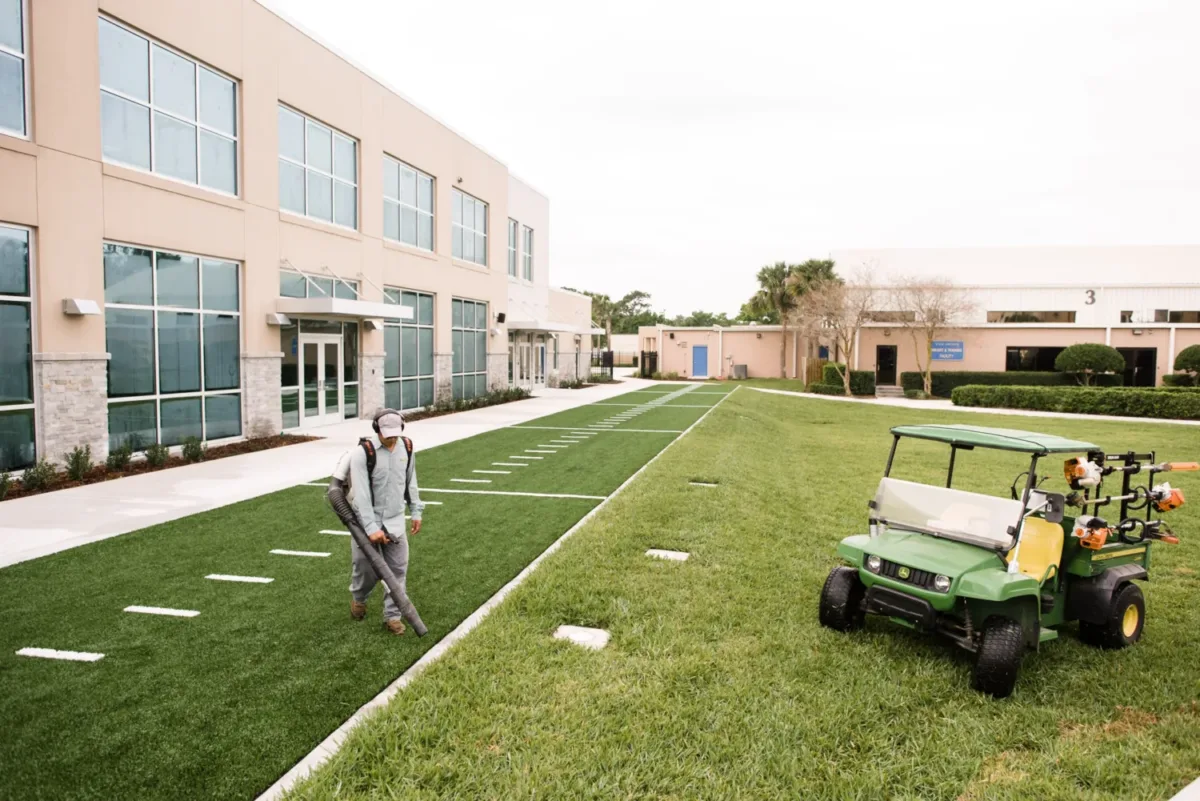Ways to Beat the Heat at Work
The summer heat is here! While most of us are looking forward to fun in the sun, when temperatures rise, it becomes important to take some extra heat safety precautions to ensure workers remain safe during the hotter months. Employers should look for ways to beat the heat at work that are both simple and proactive, such as encouraging workers to stay hydrated, to take advantage of air conditioned spaces and to understand the signs of heat illnesses.
Heat safety is important for all workers during summer, and not just those in outdoor settings. Read on to learn how keeping a cool head – and everything else – can not only improve workplace morale but also protect your employees when the weather turns a bit too hot and humid.

Spotting and Treating Heat Illnesses
If you’ve ever felt a little lightheaded and scorched after an afternoon in the sun, you know how draining the summer heat can be. Heatstroke is the biggest individual danger and, if left untreated, can be fatal, as the National Safety Council (NSC) pointed out. Other common hazards include dehydration, heat cramps and heat exhaustion. Safeguarding workers against these heat illnesses starts with training the members of your staff to spot the warning signs, and educating them on how to take action when a peer is struggling in the hot weather.
Wondering if you or someone else might be suffering from a heat-related illness at work? While there are many different types of temperature-related hazards, most come with similar symptoms. According to the Occupational Health and Safety Administration (OSHA), you should keep an eye out for these common heat illness signs:
- Excessive thirst
- Headaches
- Nausea
- Dizziness or confusion
- Weakness and/or fatigue
- Excessive sweating or red skin discoloration
If you notice these symptoms in yourself or a co-worker, it’s crucial to find a cool, shaded area, drink plenty of water and seek medical attention immediately. Of course, certain types of heat illnesses (particularly those that are severe) should be handled in a specific and cautious manner. The NSC highlights two heat illnesses that can escalate to “delirium, organ damage and even death”:
- Heat exhaustion: Prolonged sweating can lead to an excessive loss of water and salt in your body, making you feel weak, dizzy and cramped. If you notice your heart rate is spiking and your skin is starting to turn pale or ashen, you may be suffering from heat exhaustion. To prevent your condition from turning into a serious heatstroke, it’s important to move to an air conditioned space, drink enough water to replenish your fluids and drape cold, wet towels over your neck.
- Heatstroke: When left unresolved, a case of heat exhaustion can quickly evolve into a full-blown heatstroke, which can cause severe, lasting damage to your body. At this point, your excessive sweating has likely stopped, leaving your skin looking flushed and feeling hot to the touch. Other key warning signs include convulsions, irrational behavior and an internal body temperature of 103 degrees or above. If you or a co-worker experiences these symptoms, you should seek immediate medical attention by calling 911. The NSC also warns not to “force the victim to drink liquids,” and instead focus on cooling their body temperature to 101 degrees or below.
Keep in mind, workers in almost every industry are at risk of heat illnesses, not just those who work long hours in the sun. For example, manufacturing plants and commercial kitchens often have high ambient temperatures (especially in the summer) that mimic the effects of hot weather and summer heat. To create an effective heat safety plan, you should carefully consider the specific conditions your employees are exposed to and look for creative ways to beat the heat at work.
3 Proactive Heat Safety Tips
The ability to identify and respond to heat illnesses is only one piece of the puzzle – employers must also take steps to create proactive policies and controls that help minimize the risk of workplace accidents. While every workplace is different, there are 3 strategies that can help prevent heat exhaustion, heatstroke and other heat-related illnesses.

1. Water, Water Everywhere
The easiest step toward preventing heat-related illnesses is also one of the most important: Drink plenty of water throughout the day especially when working outside. Drinking cool, clean water helps regulate your body temperature and prevents dehydration. OSHA recognizes the importance of providing water to workers, which is why the agency’s standards require an employer to provide potable water in the workplace.
Here are simple solutions to make sure thirsty employees get the refreshment they need:
- Provide bottled water.
- Install a freestanding water cooler at all of your job sites.
- For mobile or outdoor worksites, put a plastic cooler in a central location.
Make sure a steady supply of cold water is available at all workplaces so your employees can stay hydrated at all times. But remember that the combination of sweating and high water consumption can flush sodium from the body, which is its own danger. Sports drinks help counteract this risk by replenishing salt and electrolytes when the summer heat is at its peak.
2. Dress for Success
Outdoor workers should wear lightweight, loose-fitting and breathable clothing whenever possible, as well as a hat, to keep the hot weather at bay. OSHA also offers other useful dressing tips to help beat the heat, including:
- Wear light colors: Light-colored clothing reflects the sun, while dark colors absorb heat.
- Cotton, linen and rayon fabrics are lightweight and transmit air and moisture more freely than other fabrics.
- Don’t forget eyewear! A pair of UV and glare protection sunglasses can do wonders.
This advice doesn’t mean those working indoors should wear whatever they want just because they spend their time in an air conditioned environment. A long walk from the subway or bus stop to an office can turn into an ordeal in the summer heat, so office-bound employees should also keep their clothing on the lighter side.
3. Practice Sun-Safety
Sunscreen is a must for all outdoor workers. When working outdoors, remember to select and regularly apply sunscreens rated at least SPF 30 and marked as sweat and water-resistant to help beat the heat. Other sun-stopping tips include:
- Considering the sun burns brightest between 11 am and 3 pm, minimize outdoor work during the mid-day hours (coinciding with lunch, making it easier to schedule around the hot weather).
- Tell workers to pace themselves and find regular opportunities for small breaks when they feel thirsty or overheated.
- Make sure there are air conditioned spaces or shaded areas at every worksite, where employees can dodge the sun’s rays during a break or at lunch.
Use OSHA Resources
The OSHA Heat Index provides specific heat safety recommendations for working in environments at particular temperatures. For example, anything below 91 degrees Fahrenheit requires only common-sense heat protection, whereas a 103- to 115-degree worksite should have access to on-site first aid and medical attention in case of heatstroke. OSHA also offers an app that allows easy monitoring of the heat index and provides reminders of best practices for a given heat level.
To protect new workers from heat-related illnesses, OSHA recommends they work shorter workdays in the heat during their first 1-2 weeks. OSHA and NIOSH also recommend the Rule of 20 percent for building heat tolerance. New workers should work only 20 percent of the normal duration on their first day and increase work duration by 20 percent on subsequent days until the employee is working a normal schedule.
Last but not least, check out FFVA Mutual’s resources for managing heat risks on the job. Our Solutionists are with you every step of the way to help prevent workplace injuries and illnesses, as well as quickly manage claims if and when they happen.































